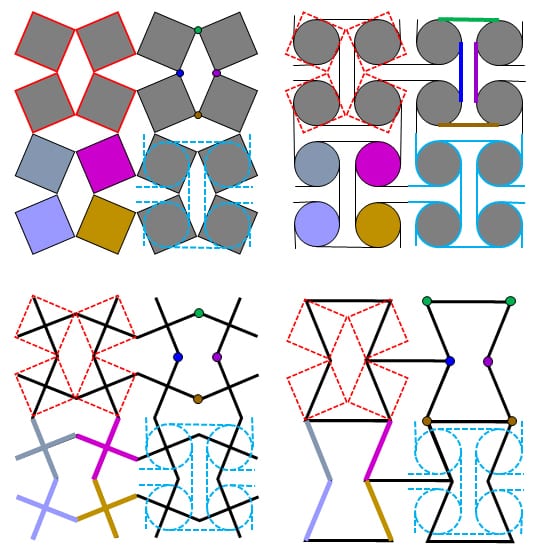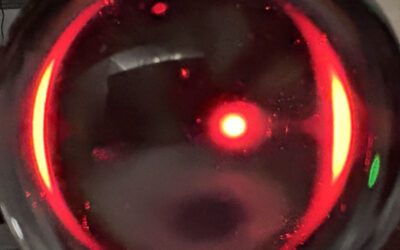The field of materials research is never boring, especially because of the steadily growing investigation into negative materials, i.e. materials that behave in a counter-intuitive fashion when subjected to external stimuli. One example is auxetic materials, which widen sideways when stretched longitudinally, as opposed to ordinary materials which shrink sideways. These unique features hint at a great potential for extraordinary performance of auxetic materials over conventional ones, as well as for groundbreaking applications.
To explore this potential, a small but proliferating community of scientists and engineers has been devoted to studying auxetic materials. In a recent review article published in Physica Status Solidi RRL, Prof. Teik-Cheng Lim from the Singapore University of Social Sciences reviews the established mechanism analogies across auxetic models with different geometrical genres.
 An example of the identification of auxetic mechanism analogy from the rotating square model (top left), anti-tetrachiral model (top right), a type of missing rib model (bottom left), and re-entrant model (bottom right) is shown in the figure. Each model consists of four rotating elements, where one of the elements is transposed onto the corresponding ones in other models to show the analogous counterparts.
An example of the identification of auxetic mechanism analogy from the rotating square model (top left), anti-tetrachiral model (top right), a type of missing rib model (bottom left), and re-entrant model (bottom right) is shown in the figure. Each model consists of four rotating elements, where one of the elements is transposed onto the corresponding ones in other models to show the analogous counterparts.
The mechanism analogy shows that a comparable mechanism is the main factor in establishing fundamental similarities between the various auxetic models, while their geometrical resemblance is secondary.
This study allows the classifications of novel auxetic models in the future, and more importantly, to encourage researchers to introduce fundamentally new auxetic models with different types of deformation mechanisms from the present study.
The text was generally provided by Prof. Teik-Cheng Lim and edited by Ekaterina Perets.

















